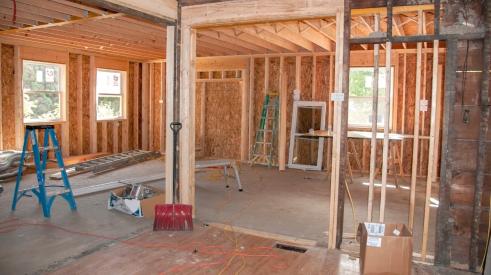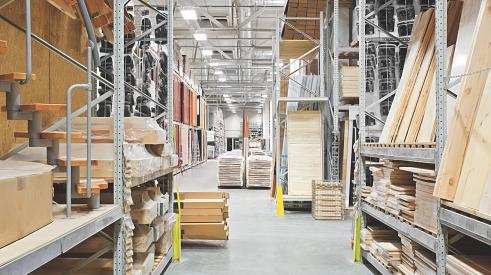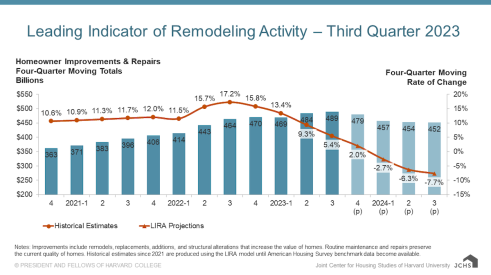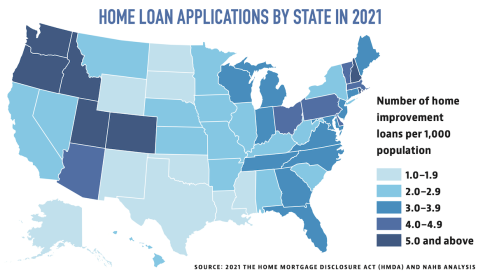Construction employment expanded in 35 states in February as the industry added 48,000 jobs nationally, the largest one-month gain in nearly six years, according to an analysis by the Associated General Contractors of America of Labor Department data. Association officials cautioned, however, that newly enacted federal budget cuts could reverse the construction employment pickup in numerous states.
“The turnaround in construction hiring that began in a few states two years ago has now spread to most of the country,” said Ken Simonson, the association’s chief economist. “There are strong indications that the expansion will continue for residential and private nonresidential construction, but investment in infrastructure and public buildings is likely to shrink further.”
Simonson noted that only 12 states and D.C. lost construction jobs between January and February, while employment held steady in three states: Connecticut, Montana and Vermont. Among the 35 states with one-month increases in construction employment, Utah had the largest percentage rise (5.3 percent, 3,700 jobs); followed by Mississippi (4.7 percent, 2,200 jobs); Oklahoma (4.7 percent, 3,200 jobs); and Missouri (4.3 percent, 4,500 jobs). Texas added the largest number of jobs (15,700, 2.6 percent); followed by Virginia (6,500, 3.8 percent); California (5,700, 0.9 percent) and Missouri.
Washington had the steepest monthly percentage drop in construction employment (-2.5 percent, -3,600 jobs); followed by North Dakota (-2.3 percent, -700 jobs) and Ohio (-2.1 percent, -3,700 jobs). Florida lost the largest number of construction jobs for the month (-5,300, -1.5 percent); followed by Ohio and Washington.
Simonson reported that 29 states and the District of Columbia added construction jobs from February 2012 to February 2013, 20 states lost workers and one—Delaware—had no change. Alaska led all jurisdictions in the percentage of new construction jobs (13.3 percent, 2,200 jobs); followed by Hawaii (8.0 percent, 2,300 jobs); and Texas (7.5 percent, 43,300 jobs). Texas added the most new construction jobs over the past 12 months, followed by California (35,800, 6.2 percent).
Among states losing construction jobs during the past year, Rhode Island lost the highest percentage (-10.4 percent, -1,700 jobs); followed by Arkansas (-9.6 percent, -4,700 jobs); Montana (-7.2 percent, -1,700 jobs) and South Dakota (-6.4 percent, -1,400 jobs). Ohio lost the most jobs (-7,900 jobs, -4.3 percent); followed by Illinois (-7,500 jobs, -3.8 percent) and Arkansas.
Association officials said the cuts in federal funding for construction mandated by the spending bill enacted earlier this month would hit states very unevenly. States with large military and federal civilian facilities are particularly likely to experience a downturn in public construction and resulting loss of construction jobs, they said.
“With the nation’s infrastructure having just received a near-failing grade from civil engineers, this is no time to be reducing federal investment in needed transportation, water systems and environmental structures,” said Stephen E. Sandherr, the association's chief executive officer. “Such underinvestment will cost construction workers and firms now but will be even more costly to the nation’s competitiveness and quality of life over time.”
Related Stories
How to Increase Your Odds of Closing Remodeling Sales
Use these tips to hone your sales process and grow close ratio
The Remodeling Market Could Turn in Q4, Says Harvard
Repair and remodeling spending could see an uptick at the end of the year
How to Communicate with Today's Cautious Remodeling Client
Amid economic skepticism, Americans continue to spend. Now, how can you get them to spend on remodeling?
Building Materials Show Stability in 2023
Although supply chain bottlenecks have eased in recent months, shortages of some key materials persist.
Remodeler Sentiment Remains Positive
Surveys reveal a strong outlook, and how the aging population will lift remodeling
Next Year to Challenge Remodeling, Says Harvard
The latest LIRA report predicts greater decrease in home improvement and remodeling spending
Remodeling Loan Data Reveals Geographical, National Trends
An analysis of loan data shows the most popular, and least popular, states for home improvement
Remodeling Spending to Decline at Faster Rate, Says Harvard
Remodeling spending may drop for the first time since 2020, according to predictions from Harvard's Remodeling Futures Program
Working to Create a Strong, Skilled Workforce
Remodeling is booming, but labor shortages continue to challenge the industry













